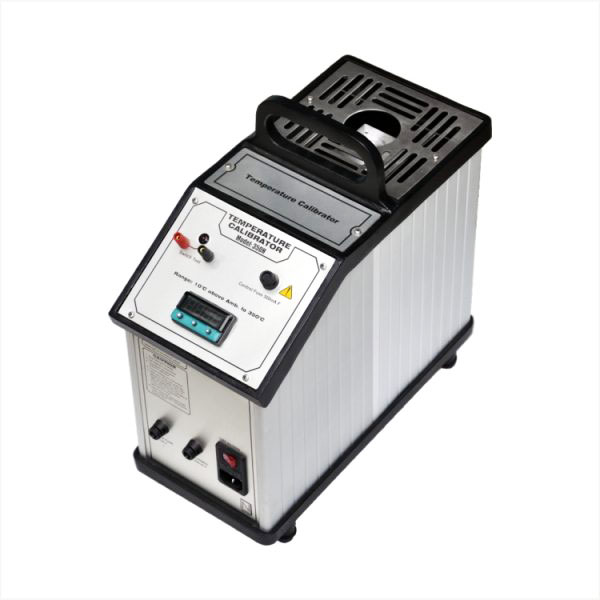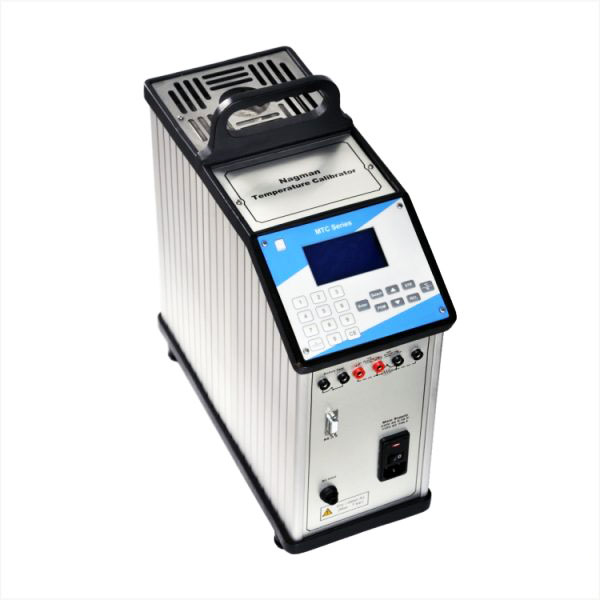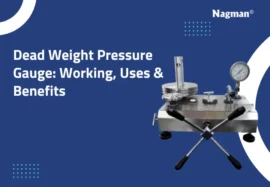One of the most prominent parameters in the process sector is temperature.
A temperature sensor is the first core element of every temperature monitoring system. Everything begins through the use of a temperature sensor, so to speak. The temperature sensor is critical to the precision of the temperature sensing loop of an instrument. A dry-block calibrator can usually be used to calibrate thermocouples and straight probes. Baths are preferable for temperature sensors with more difficult shapes and sizes. Like any other measurement device, the temperature sensor needs to be calibrated periodically.
A temperature sensor measures the temperature of a fluid by taking readings from the device. It sends a signal that is close enough to the temperature that the circuit is subject to. When the device’s temperature fluctuates, the throughput fluctuates as well. A resistance signal, a voltage signal, a digital signal, and so on are provided by some of these systems.
There are many types of temperature sensors with many different output signals.
To calibrate temperature sensors, one of three methods is used:
- Using a simulator to calibrate only the electronics
- Test the electronics as well as the sensor in a dry well.
- Make sure the electronics and the sensor are calibrated using a dry well and a baseline thermometer.
Here is a quick rundown of various strategies, along with their benefits and drawbacks.
Only calibrating the electronics on a simulator
Any temperature simulator processes the input temperature that outputs or mimics the corresponding voltage (thermocouple) or resistance (RTD or thermistor) based on standard regionally accepted standards to calibrate the electronics of a temperature quantification and control system.
Advantages of this method:
- It’s quick, the electrical settings are instantaneous and do not demand any time for stabilisation.
- The calibrating technology included in this approach may be more portable than most others in all the other procedures.
- Swappable probes can still be used with the metre.
Disadvantages of this method:
- The probe may need to be calibrated separately, or it will continue to be uncalibrated.
- As a result, the thermometer data will retain old values and remain uncalibrated, and data measured with it cannot be traced.
Test and Calibrate electronics & sensors in a dry well
Each dry-well is calibrated to the specified test temperature under this approach, and also a thermometer, metre, and probe are all positioned in the well. Then the measurement on the thermometer is validated to the measurement on the installed thermometer inside the dry well.
Advantages of this method:
- The probe and meter have been calibrated together.
- It is the current temperature that is used.
- The system is straightforward to set up because just one instrument (on the dry-well) is being used.
Disadvantages of this method:
- The calibrated accuracy of the dry-well limits accuracy.
- When the probe does not reach the bottom of the well, further setbacks can occur.
- After the calibration, the probes for the unit under test are not interchangeable.
- It takes time for the temperatures in the dry well to adjust.
Both the sensors and electronics are calibrated against a baseline thermometer inside a dry well
The thermometer is compared to a more precise thermometer put in an adjoined opening in the well under this strategy, which uses a dry-well as a reliable heating element.
Advantages of this method:
- This strategy achieves the highest degree of precision.
- It is possible to trace the calibration back to an identifiable baseline.
- When it comes to synchronizing unit-under-test sizes, you have additional options.
Disadvantages of this method:
- It costs vs the other two alternatives.
- The configuration is significantly more complicated, considering two instruments are now used.
- Following calibration, the probes undergoing assessment are just not interchangeable.
The Nagman dry well calibrators necessitate a certain time limit to record fluctuations in temperature reading.
Summary
There are three main ways of calibrating temperature sensors, each with its own set of advantages and disadvantages. In a nutshell, these techniques are as follows:
- Calibrating only the peripherals with a simulator — This process is fast, but the probe will need to be calibrated separately.
- Calibrating both sensors as well as electronics in the dry-well — This methodology enables users to calibrate the probe and metre as a unit, but the precision is limited by the dry-calibrated well’s precision.
- Calibrating in a dry well using a reference thermometer on both the electronics and the sensors — This technique is the most accurate, however, it is also the most pricey and time-consuming.







